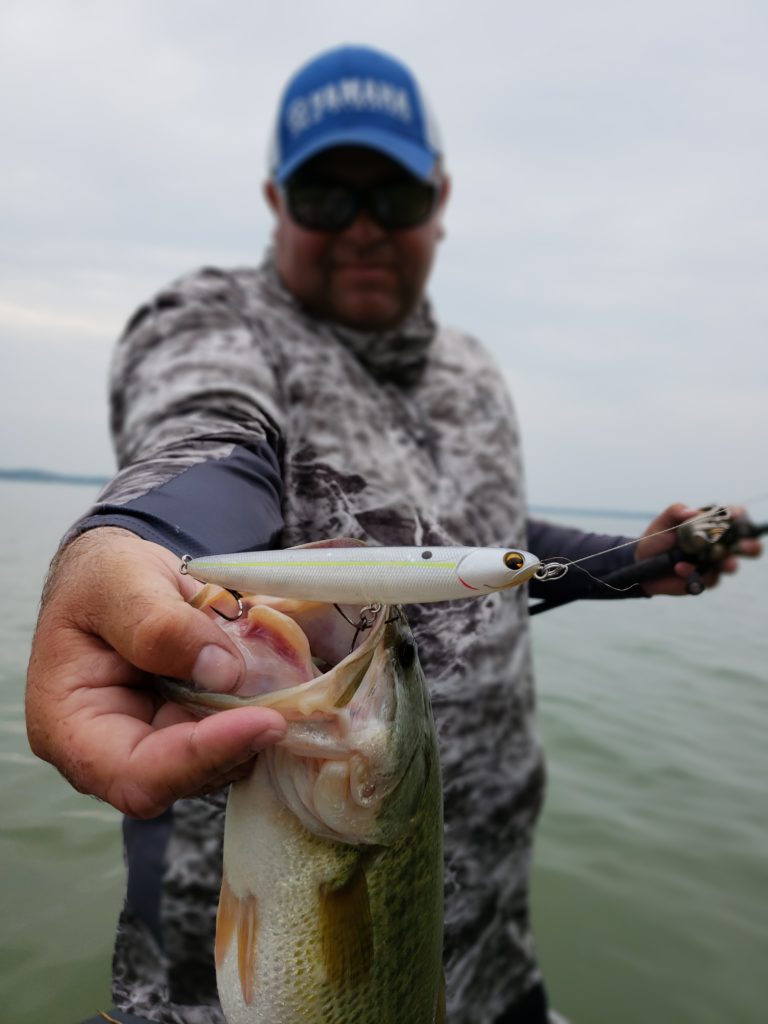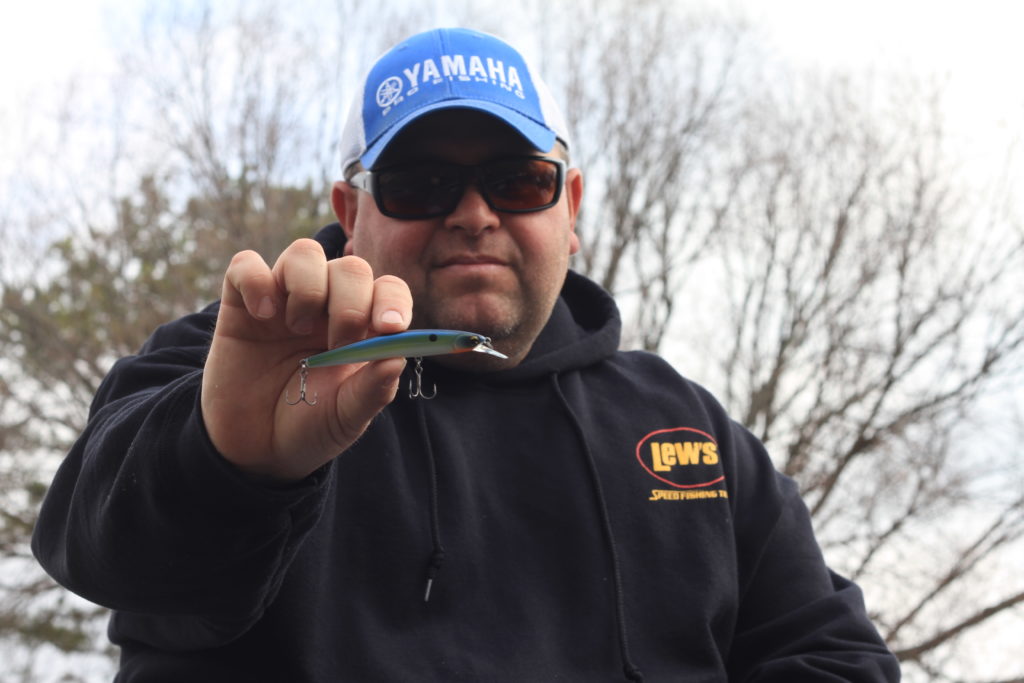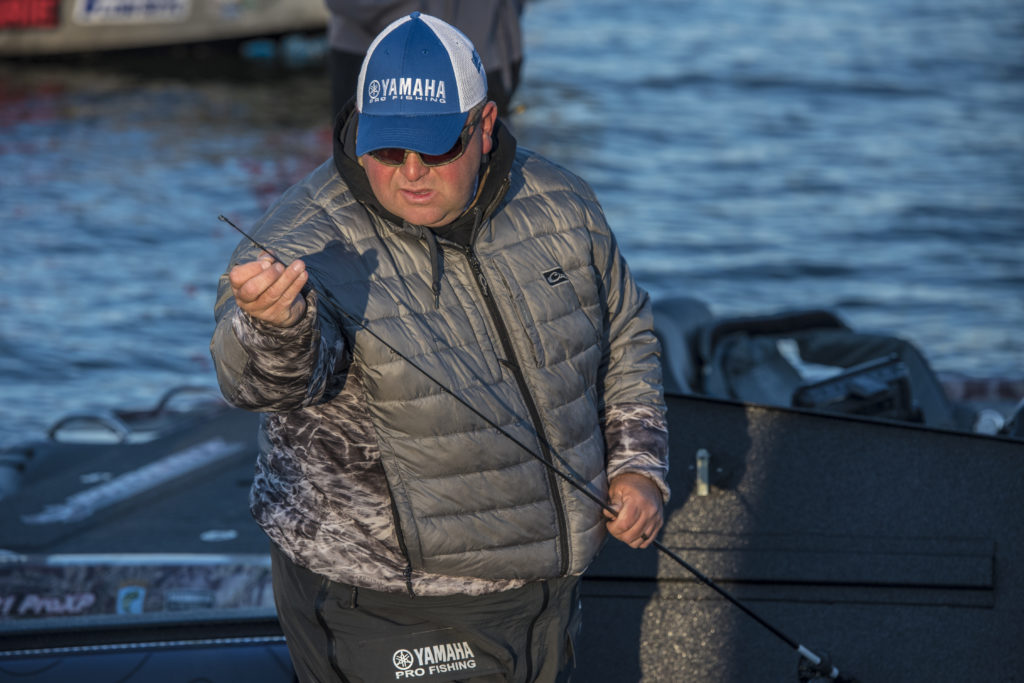The topic of selecting the right fishing line for a given lure often involves several variables. The size of the lure, fish in that body of water, and personal preferences all go into the equation for picking the right line type and pound test. Add in the fact that different lines can also affect a lure’s action and using the correct line becomes critical.
Bassmaster Elite Series pro Bill Lowen keeps his approach relatively straightforward when selecting his line to make sure that he can stay in control of his lures and let them work as intended.
Topwaters
For the most part, topwater baits are best when fished on either monofilament or braided line and Lowen will use both depending on the bait and where he is fishing.
Little Stik and Big Stik
For both of these large topwater baits, Lowen prefers braided line for several different reasons.
“These baits will cast a country mile with any line, but they will cast farthest with braided line,” Lowen said. “There is no benefit to using mono here because when the bait is that far away and one gets it, you don’t want any stretch and the braided line doesn’t have any. That’s why I go with a 30-pound braid. The only thing I change between the two baits is using a heavier rod for the Big Stik.”
He also prefers braid for working the baits more effectively.
“You have more control with braid and can walk it much better,” he added.
Skimmer and Skimmer Grande
These two walking baits are lures that Lowen is comfortable fishing on both braided and monofilament lines and he says they walk well with either type of line.
“They are smaller baits with a subtle action, so I don’t want to use too heavy line,” Lowen said and he prefers a 12 or 15-pound monofilament or a 20-pound braided line.

Finesse Popper
The Finesse Popper is a bite-sized topwater bait that excels when fish are feeding on smaller bait and Lowen says he is careful to select the right line to maximize its action.
“It walks really well, but you don’t want to use a line that is too heavy because it can take away some of that action. You don’t want to hinder the natural movement of the bait,” Lowen said.
With that being said, he fishes it with a 12 or 15-pound monofilament line or a lightweight 15-pound braided line.
HeliPs Propbait
“Braided line and prop baits don’t mix. Because braid is so limp, it tends to fold back on itself and wrap up in the prop,” began Lowen. So, he prefers a 15-pound monofilament when fishing the HeliPs.
Crankbaits, Jerkbaits and the Glide Fluke
For this collection of lure types, fluorocarbon line is the gold standard for modern bass anglers and Bill Lowen believes it is the way to go.
Bill Lowen Square Bill Crankbait
Lowen will fish his signature series squarebill crankbait on anything from 12 to 20-pound test fluorocarbon and he adjusts it based on how he wants to fish it.
“I will use 12 if I want it to get down to the maximum depth, which is around 3-feet. I change my line based on how deep I want it to go,” Lowen said. “I’ll go all the way up to 20-pound test if I want to have it wake on the surface.”
Pinjack 200 and Beast Hunter
For these two diving crankbaits, Lowen typically goes with a 12-pound test.
“For the Pinjack, I want it to get down as deep as it can go and 12-pound lets me do that. I also think you get the best action with it,” Lowen added.
For the bigger Beast Hunter, he follows the same reasoning but will go to 15-pound if fishing around heavier cover.
Shaker
This flat-sided crankbait is one that Lowen said is highly affected by the line you use and because of that, he always goes with 12-pound fluorocarbon.

“The way I fish the Shaker is with a lot of twitching during the retrieve. I will also hesitate for a second and pause it when I come by a piece of cover,” Lowen began.“If you use too heavy of line, the bait tends to come back on itself when you pause it. With a heavier line, it also doesn’t twitch as well.”
Rock-n-Vibe and Suspending Vibration Lipless
Lowen keeps it very simple for all of his lipless crankbait fishing and uses the same line across the boat.
“I use 15-pound fluorocarbon for all of my rattle baits. It gives you the best casting and you still have good contact and control with your lure,” he said.
Flit Jerkbaits
Like the Square Bill, Lowen finds himself adjusting his line size for the Flit jerkbaits based on the conditions and what he wants to achieve.

“Adjusting the line is the easiest way to control the depth that your bait will get down to. The Flit already dives down more than a lot of baits that are the same size and adjusting your line can get them even deeper,” Lowen said. “They are the deepest diving ‘shallow jerkbait’ I know of.”
For the most part, he will use a ten or 12-pound test but will increase it at times.
“Going up to 15-pound will keep it up much higher in the water column,” he added.
Glide Fluke
When fishing either size of the Glide Fluke in both the sinking and floating version, Lowen sticks with the same 15-pound fluorocarbon line.
“To me, that’s the perfect balance where you can still get good action from the bait and still withstand all the movement from the bait. I fish it with a bunch of jerks and twitches and that puts stress on the line, so 15-pound is perfect,” he added.
Selecting the right line for each lure is a critical piece of the puzzle. Picking the right line will ensure that you are getting the best action from your lures and set yourself up for success on the water.



